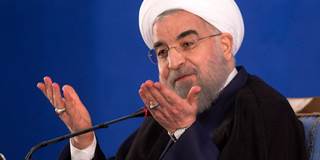The landslide re-election of Iran’s president, Hassan Rouhani, reflects the by now familiar pattern of continuity and change that has characterized Iran’s major elections over the last two decades. But it also stands out in one key way: Rouhani has remained popular despite pursuing painful macroeconomic stabilization.
LONDON – The landslide re-election of Iran’s president, Hassan Rouhani, reflects the by now familiar pattern of continuity and change that has characterized Iran’s major elections over the last two decades.
For starters, the result defied most expectations. While Rouhani was the favorite, few anticipated his large margin of victory (by winning 57% of the vote, he precluded a runoff). Previous landslide victories in Iran – those of the reformist Mohammad Khatami in 1997, of the little-known populist firebrand Mahmoud Ahmadinejad in 2005, and, arguably, even of Rouhani four years ago – were also largely unexpected outcomes.
The second familiar feature of the latest election was high voter turnout – about 73% – which has been a hallmark of elections involving popular reform-minded candidates. The highest-ever turnout – nearly 85% – was recorded in the disputed 2009 election, when Mir-Hossein Mousavi seemed certain to win, yet Ahmadinejad, the incumbent, was declared the victor.

LONDON – The landslide re-election of Iran’s president, Hassan Rouhani, reflects the by now familiar pattern of continuity and change that has characterized Iran’s major elections over the last two decades.
For starters, the result defied most expectations. While Rouhani was the favorite, few anticipated his large margin of victory (by winning 57% of the vote, he precluded a runoff). Previous landslide victories in Iran – those of the reformist Mohammad Khatami in 1997, of the little-known populist firebrand Mahmoud Ahmadinejad in 2005, and, arguably, even of Rouhani four years ago – were also largely unexpected outcomes.
The second familiar feature of the latest election was high voter turnout – about 73% – which has been a hallmark of elections involving popular reform-minded candidates. The highest-ever turnout – nearly 85% – was recorded in the disputed 2009 election, when Mir-Hossein Mousavi seemed certain to win, yet Ahmadinejad, the incumbent, was declared the victor.